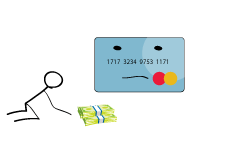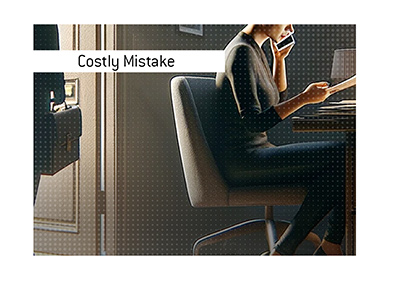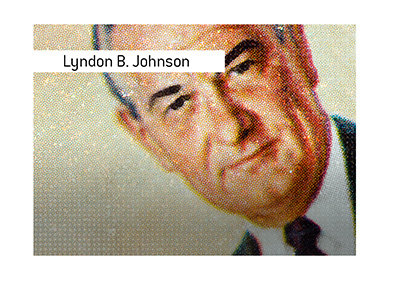Revolving Consumer Credit Balances Continue to Trend Lower As Americans Pay Down Their Debt
 The Federal Reserve reported late last week that the total amount of outstanding revolving consumer credit in the United States continued to fall in June, continuing a trend that has been in place since the summer of '08.
The Federal Reserve reported late last week that the total amount of outstanding revolving consumer credit in the United States continued to fall in June, continuing a trend that has been in place since the summer of '08. According to the Federal Reserve, there was a total of $2.418 trillion in total outstanding consumer credit as of June 2010. Of this amount, $826.48 billion was in the form of revolving credit, while the remainder (approximately $1.59 trillion) was non-revolving credit.
"Revolving credit" is credit that can be used repeatedly, assuming that you pay off your balance. The best example of revolving credit is a credit card.
"Non-revolving credit", on the other hand, is made up of loans that have a fixed repayment schedule. An example of non-revolving credit would be a car loan - once you pay off the loan, the credit is no longer available to you.
For this article, we are going to focus on "revolving credit".
Outstanding consumer revolving credit in the US hit a high of $975.7 billion in September of 2008. Why did this number continue to spike, even after the "Great Recession" started in December of 2007?
Up until 2006 and early 2007, credit was extremely easy to come by in the United States. If you had a pulse, then you likely qualified for a number of different credit cards. Many people took full advantage, applying for as much credit as they possibly could in order to finance lifestyles that couldn't be covered by their monthly paychecks. Many of these people also owned homes - as long as home prices were rising, people could take out home equity loans to pay off their outstanding credit card balances.
When the real estate market started to tank, many people found that a seemingly never-ending fountain of cash (equity in their homes) had suddenly been shut off. At the same time, unemployment numbers started to rise as an economic slowdown took hold in the country.
The people who had been living on credit suddenly needed to use their credit cards more than ever. Many households lost one or both of their incomes, and credit cards were used to survive from month to month.
For this reason, revolving consumer credit balances continued to spike long after the "Great Recession" started in December of 2007.
A few things started to happen in 2008 that resulted in these balances being driven lower:
1) Access to credit suddenly became much tighter.
2) Americans suddenly started allocating more of their monthly incomes to saving and paying down their debts.
This trend, which started in the fall of 2008, is still continuing today.
After hitting a high of $975 billion plus in September of 2008, outstanding revolving consumer credit has fallen to $826 billion less than two years later. Non-revolving credit balances have stabilized, but revolving credit balances have continued to drop steadily as Americans endeavor to pay off as much of their expensive debt as they possibly can.
In fact, outstanding revolving consumer credit balances have fallen every month from September '08 to June '10. In June '10, outstanding revolving credit fell at an annualized pace of 6.5%.
With the economy noticeably slowing down over the past few quarters, it will be interesting to see if Americans continue to pay down their balances in the months ahead.
Source: Federal Reserve Statistical Release - Consumer Credit
Source: Davemanuel.com - Outstanding Consumer Credit Has Skyrocketed Since 1970
Filed under: General Knowledge



